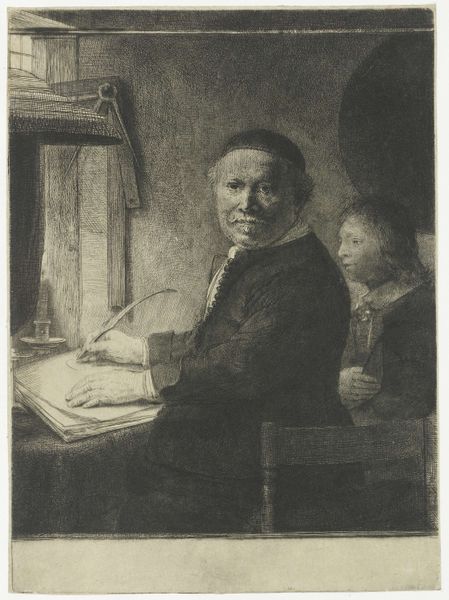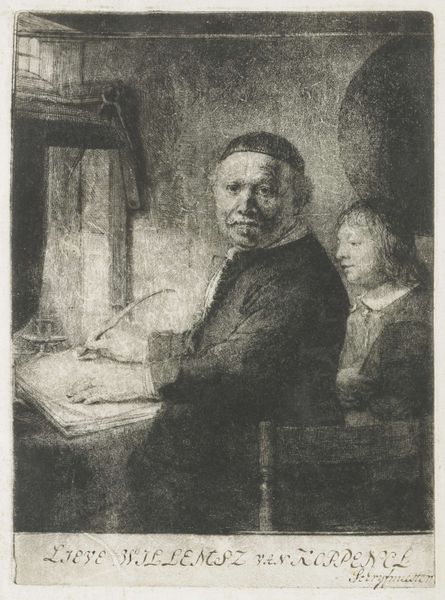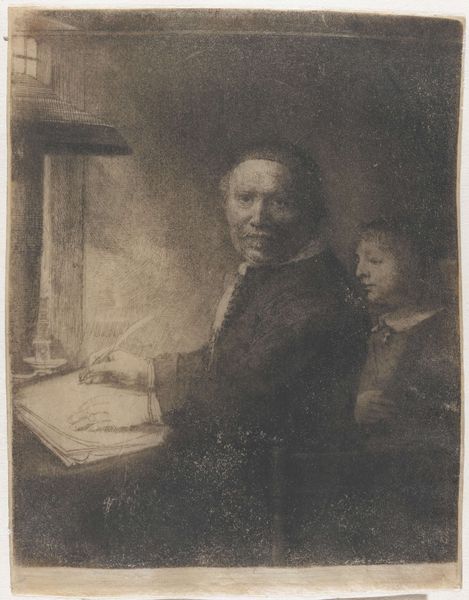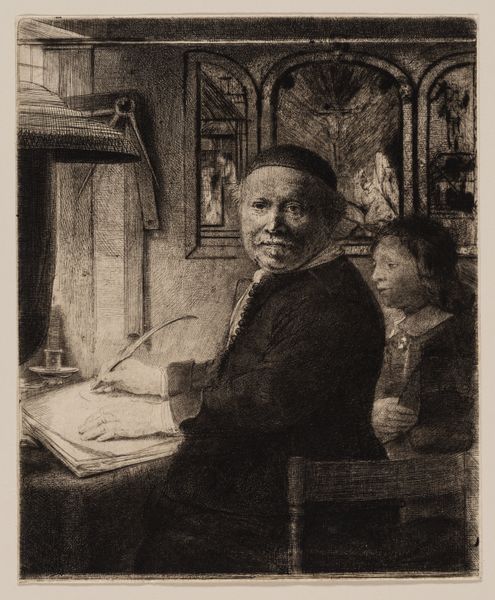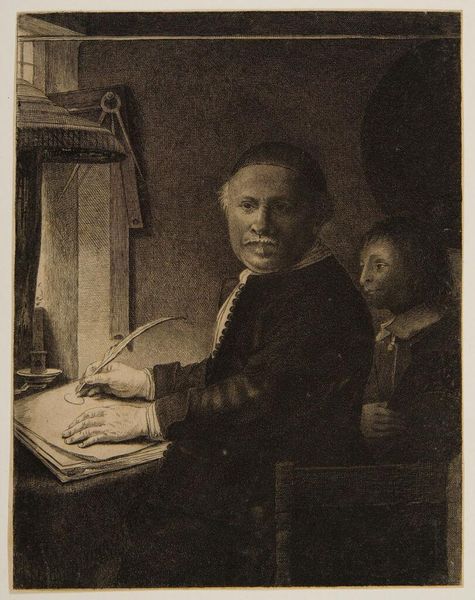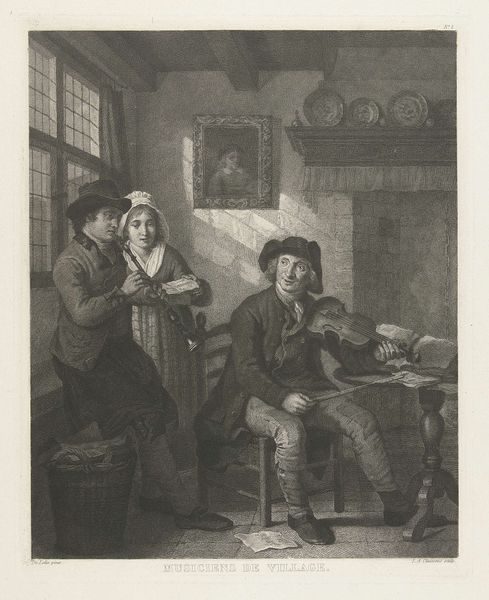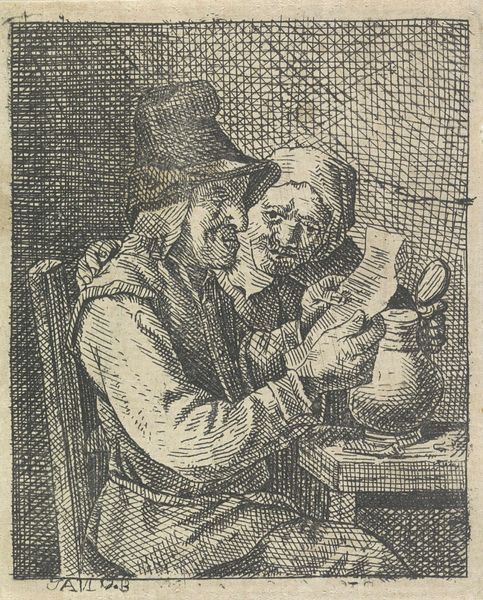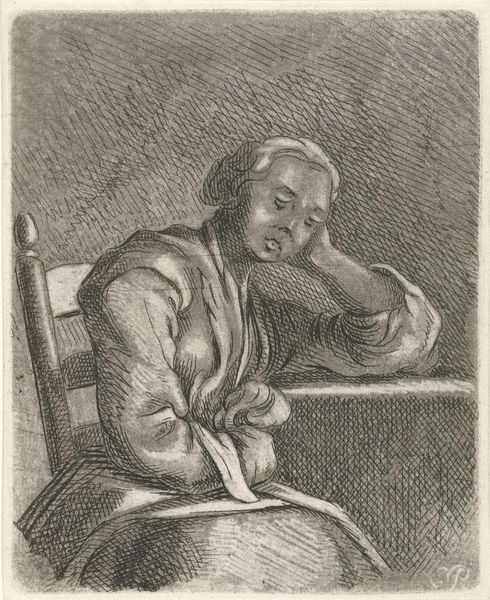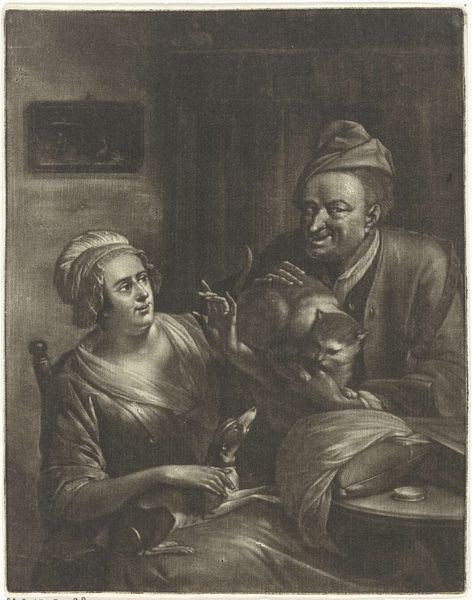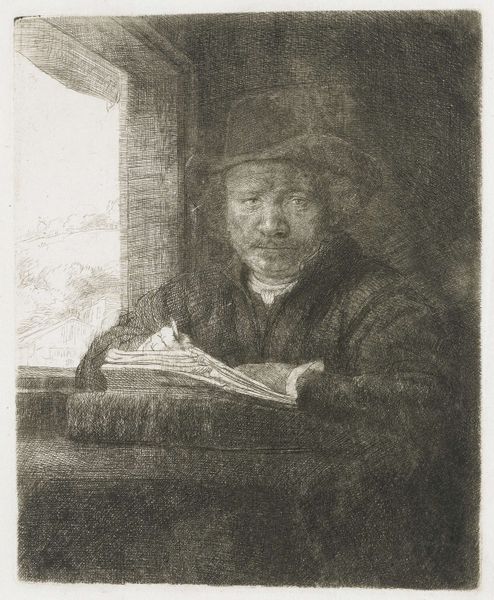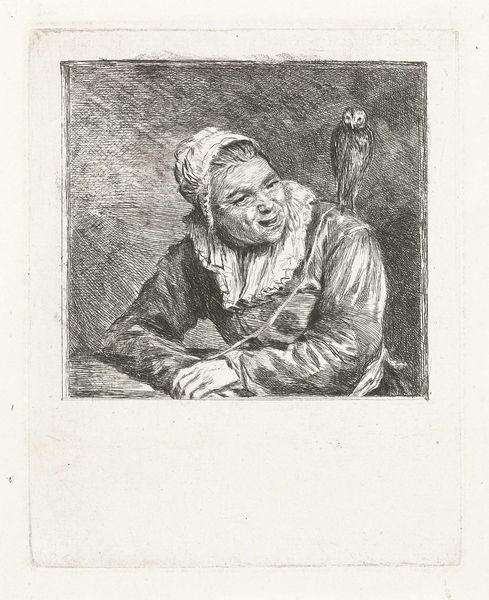
Lieven Willemsz. van Coppenol, writing master: the smaller plate c. 1658
0:00
0:00
print, etching
#
portrait
#
baroque
#
dutch-golden-age
# print
#
etching
#
portrait drawing
#
genre-painting
Dimensions: height 232 mm, width 190 mm
Copyright: Rijks Museum: Open Domain
Curator: Here we have Rembrandt van Rijn's etching, "Lieven Willemsz. van Coppenol, writing master: the smaller plate," created around 1658. Editor: My first impression is how the light seems to emanate from the paper itself, highlighting the act of writing. It’s almost reverential. Curator: Indeed. Considering the socio-political landscape of the Dutch Golden Age, this piece elevates a member of the merchant class, Lieven van Coppenol, showcasing his literacy and profession during a period of increasing social mobility and reformation. It's quite subversive, really. Editor: Subversive, maybe, but I also see Rembrandt emphasizing the physicality of writing. Look at the man's hands, the angle of the quill, and the paper's texture meticulously rendered through etching; these details emphasize the material engagement inherent in the act of creating text. It speaks to the increasing commercial value of documentation. Curator: Absolutely, but it is also interesting to see Van Coppenol’s attire depicted here – a dark garment, quite possibly emphasizing his status as not only bourgeois, but perhaps with connections to reformed religious groups in Amsterdam. And notice the rather demure figure behind him? It raises questions about the role of mentorship and knowledge sharing in his rise. Editor: Note how Rembrandt created the print. Through etching he could reproduce this image efficiently and for the masses. Etching facilitates a democratizing shift away from hand-written calligraphy. The material qualities – the line work, the subtle variations – are testaments to that shift. Curator: Furthermore, by choosing to represent him, Rembrandt might be subtly critiquing the aristocracy's waning influence and foregrounding the emerging power dynamics within Dutch society that emphasized mercantile achievements over inherited titles. Editor: I find the emphasis on his tools and process more compelling. The paper, the ink, the act of putting pen to paper: they reflect the value placed on documentation and commerce during this era. It moves away from traditional aristocratic forms of display and grandeur towards something far more workaday. Curator: It certainly offers fertile ground for different readings! Focusing on its socio-political undertones highlights how power shifts were reflected in art. Editor: I would stress that attention to materials emphasizes the changing mode of information and the democratization of knowledge taking place at the time. A truly layered print!
Comments
No comments
Be the first to comment and join the conversation on the ultimate creative platform.
